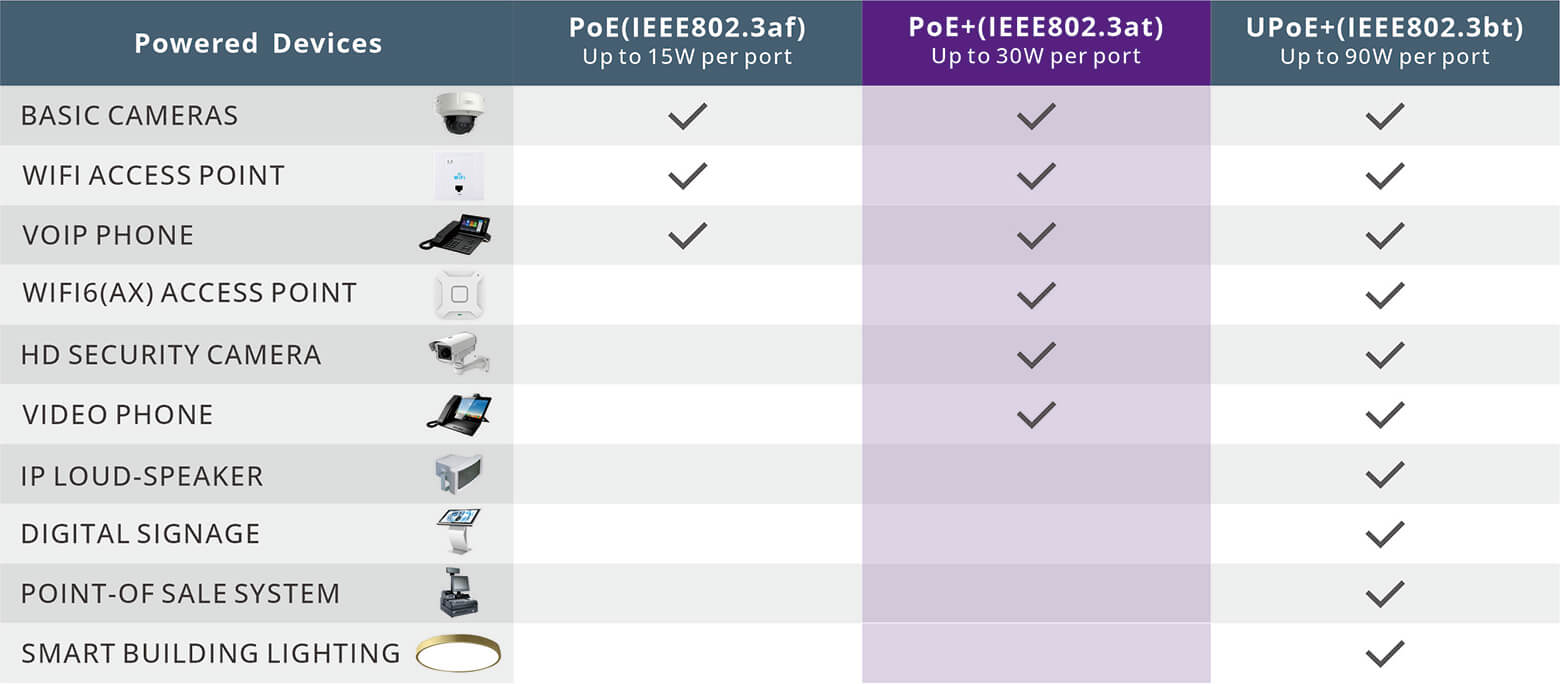Power over Ethernet (PoE) technology has revolutionized the way network devices are powered, allowing both power and data to be delivered over a single Ethernet cable. This has simplified installation and reduced costs across many industries. PoE standards have evolved over time to meet the growing demand for power-hungry devices, with PoE+ and PoE++ being two of the most important. Here, Benchu Group walks you through the differences between PoE+ and PoE++, their applications, and considerations for choosing the right technology for your network.
PoE (IEEE 802.3af): The original PoE standard, introduced in 2003, provided up to 15.4 watts of power per port, which was sufficient for devices like IP cameras, VoIP phones, and basic wireless access points (WAPs).
PoE+ (IEEE 802.3at): Introduced in 2009, PoE+ increased the power output to 30 watts per port. This was a significant improvement, enabling support for more demanding devices such as pan-tilt-zoom (PTZ) cameras and dual-band WAPs.
PoE++ (IEEE 802.3bt): The latest PoE standard, PoE++, was introduced to meet the power demands of even more advanced devices. PoE++ comes in two types:
This enhanced power capacity makes PoE++ suitable for powering devices such as high-definition PTZ cameras, large digital displays, and even some small networked appliances.

The most significant difference between PoE+ and PoE++ is the amount of power each can deliver. PoE+ offers up to 30 watts per port, which is adequate for most standard network devices. However, as the demand for more powerful devices grew, PoE++ was developed to provide up to 60 watts (Type 3) or 90 watts (Type 4) per port. This makes PoE++ the better choice for environments with high-power needs.
PoE+ uses two pairs of wires within an Ethernet cable to deliver power, while PoE++ utilizes all four pairs. This difference allows PoE++ to transmit more power efficiently and support devices with higher power demands.
Both PoE+ and PoE++ are designed to be backward compatible. PoE+ switches can power both PoE and PoE+ devices, while PoE++ switches can power PoE, PoE+, and PoE++ devices. However, the power provided will be limited to the maximum capacity of the device itself. This backward compatibility ensures a smooth transition when upgrading network infrastructure.
PoE+ is widely used for devices that require moderate power levels. Some common applications include:
PoE++ is essential for environments where devices have higher power requirements. Key applications include:
The first factor to consider is the power requirement of your network devices. If your devices need more than 30 watts of power, PoE++ is the right choice. For most standard devices, PoE+ will be sufficient.
PoE++ requires all four pairs of wires in an Ethernet cable, meaning that your existing cabling infrastructure must support this. In many cases, upgrading to Cat6a or higher cabling may be necessary to fully leverage PoE++ capabilities.
PoE++ switches and infrastructure generally cost more than PoE+. Therefore, it's important to evaluate whether your network's power needs justify the additional expense.
If you anticipate the need for higher power devices in the future, investing in PoE++ can provide a degree of future-proofing. This ensures that your network infrastructure can handle new technologies without requiring a complete overhaul.
8 Port 10/100M Unmanaged PoE+ Switch and 16 Port Industrial POE++ Switch BT 90W represent significant advancements in Power over Ethernet technology, each addressing different network needs. PoE+ is ideal for powering standard network devices, while PoE++ provides the flexibility and power needed for more advanced applications. Understanding the differences between these standards will enable you to select the right PoE solution for your network's current and future power needs, ensuring optimal performance and scalability as your infrastructure evolves.